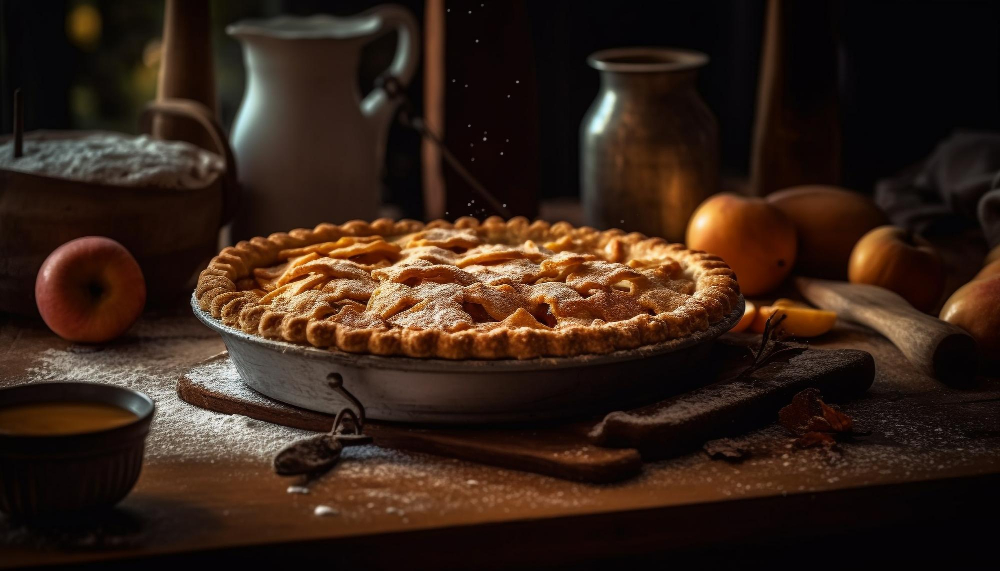Pastiera
During the Easter season, especially on Holy Thursday, something truly magical happens in Neapolitan kitchens: the making of the pastiera. It’s a ritual of ancient gestures, intense aromas, and family memories.
Every household has its version—the “real” recipe—lovingly passed down from grandmother to granddaughter. Some use only sheep’s ricotta, others prefer a blend. Some load it with aromas; others stick to simplicity. Even the crisscrossing lattice on top—called “gelosie” by some—has its own rules: some make them thin, others count them carefully, some place them with near-mathematical precision.
Pastiera’s history
The pastiera’s history is full of enchanting legends. One says that to thank the goddess Parthenope, seven symbolic ingredients were offered to the sea, and the goddess returned them in the form of a dessert—the pastiera. Another legend tells of Maria Theresa of Austria, known as “the queen who never smiled,” who was moved to smile after tasting a slice.
And then there’s the story that it was invented by the nuns of San Gregorio Armeno, who lovingly blended wheat, orange blossom, and ricotta during Holy Week.
The first written references to pastiera appear in two very different texts: in the 1600s, Giambattista Basile mentions it in The Tale of Tales, in the story of Cinderella Cat, during a banquet. But we have to wait until 1837 for an actual recipe, in Ippolito Cavalcanti’s famous cookbook.
Heads up: making pastiera is a bit complex, but it will reward you from the very first bite.

Ingredients
Ingredients for the pastry (for a flared 20 cm pastiera mold)
- 250 g all-purpose flour
- 50 g lard
- 50 g butter
- 80 g sugar
- 20 g wildflower honey
- 60 g eggs (about 1 medium)
- 40 g whole milk
- Zest of ½ lemon
- Zest of ½ orange
Ingredients for the wheat cream
- 200 g cooked wheat
- 80 g whole milk
- 25 g butter
- Orange and lemon zest to taste
- A pinch of salt
Ingredients for the rest of the filling
- 200 g sheep’s ricotta
- 180 g sugar
- 50 g candied citron
- 20 g wildflower honey
- 2 eggs
- 1 yolk
- Orange blossom water to taste
- 20 g whole milk
- Orange and lemon zest to taste
Ingredients to garnish
- Powdered sugar to taste
Preparing the pastiera
Preparing the pastiera is a ritual for me. It is one of those recipes that requires calm, hands-on work and a desire to revive old scents and gestures.
You begin with the pastry. On the work surface, sift the flour with a pinch of salt and make a classic well in the center. In it, place the butter, lard, and sugar. Start mixing them with your hands so the fats absorb the sugar. Then add the honey, egg, milk, and a good lemon and orange zest grating. Continue kneading until a soft, fragrant dough forms.
Start incorporating the flour from the edges, using a dough scraper. Once it becomes manageable, transfer to a floured surface and knead just enough to get a smooth, even dough. Wrap in plastic wrap and chill for at least an hour.
Meanwhile, cook the wheat. In a small pot, combine the precooked wheat, a pinch of salt, milk, butter, and if you have it, a bit of citrus zest for extra aroma. Bring just to a boil, stirring and lightly mashing with a fork. In minutes, it becomes creamy. Let it cool in a wide dish.
Separately, mix the sieved ricotta with sugar until smooth. Let this rest in the fridge for about an hour.
Once everything is cool, remove the citrus zest from the wheat and transfer it to a large bowl. Add diced candied citron and mix. If you want a smoother texture, give it a quick blitz with an immersion blender—just a few seconds.
Retrieve the ricotta cream, add honey, then combine with the wheat mixture, mixing gently. In another bowl, beat the eggs and yolk, add orange blossom water, milk, and more zest. Combine with the filling in two or three additions, mixing gently. The filling is ready.
Take the pastry from the fridge and divide it into two parts, one slightly larger. Roll the larger one to 3 mm thickness and gently fit it into the mold, pressing well against the bottom and sides. Trim and prick the base with a fork.
Pour in the filling, level it, and tap to release air bubbles. With the remaining dough, cut seven strips about 1–2 cm wide. Lay four diagonally, then three across to create the classic lattice. Trim the edges.
Bake in a preheated static oven at 180°C (350°F) for 50–55 minutes, placing the mold on the lower rack. When golden and fragrant, remove and cool completely. As tradition dictates, you can unmold it or serve it straight in its tin.
Final touch: a dusting of powdered sugar, and the pastiera is ready to share its story.
A few tips:
- You can replace the lard with butter, if you prefer.
- Sheep’s ricotta is traditional, but buffalo ricotta also works beautifully.
Wine pairings
Pairing wine with Pastiera is no joke, and I only ever serve it with these two wines:

Pantelleria Passito DOC – Florio (Sicily): a rich, full-bodied wine with clear notes of raisin, apricot jam, and hints of vanilla. On the palate, it’s sweet, smooth, and well-structured, with great persistence—perfect for complementing the complexity of Pastiera.
Picolit Collio DOC – Pighin (Friuli Venezia Giulia): a wine that beautifully balances the sweetness of Pastiera. It’s intense and fruity, with distinct aromas of acacia, freesia, apricot, ripe peach, and hints of apple.
